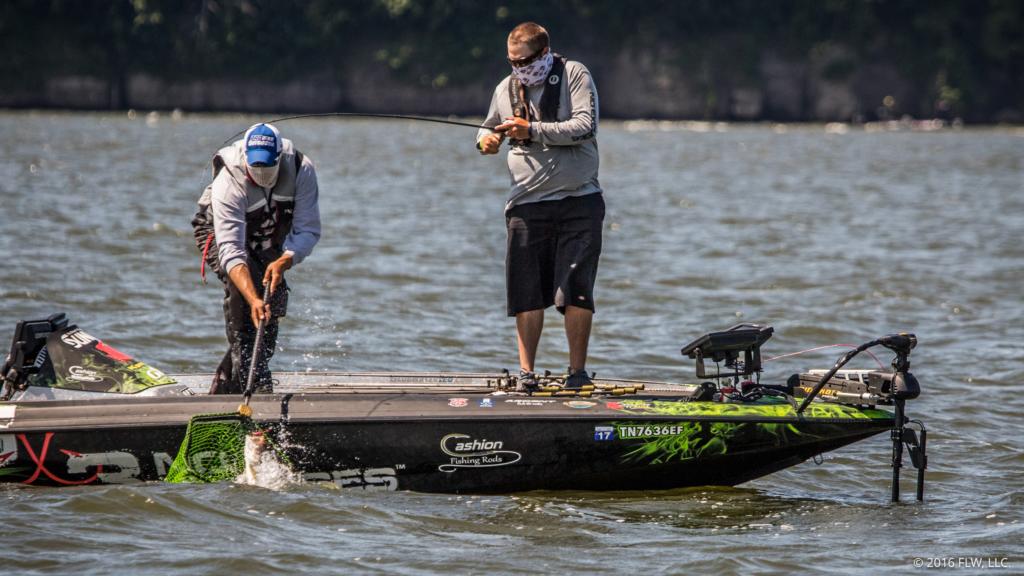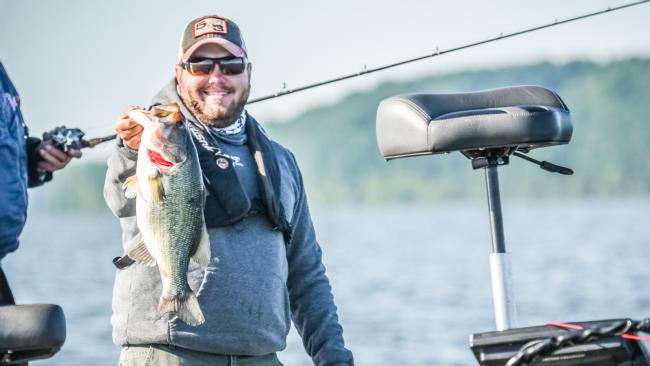Not Quite Ledge Patterns
Michael Neal breaks down his favorite tactic when fish are headed offshore, but not quite there

(The writer's opinions and observations expressed here are his own, and do not necessarily reflect or represent the views, policies or positions of FLW.)
I was checking Kentucky Lake the other day for the upcoming Walmart FLW Tour event, and I felt that it was a little behind as far as having the right water temperature for the fish to move offshore to the ledges. On my home lake, Chickamauga, they’re already on the ledges in pretty good numbers. I don’t know why it is exactly, but at Kentucky Lake the fish don’t start filtering out good until the water hits the 70s.
In this postspawn scenario, I start looking for fish somewhere close to where I know they spawn. What I’m looking for are 4- to 8-foot drops, on average, where there is some kind of cover such as rocks, brush or logs. Just like they do earlier in the year as they move into their spawning areas, bass will hang up on these places as they move out.
When they’re that shallow, your electronics probably won’t show them. You’re not really looking for fish, but irregularities in the bottom or cover on a drop. This might be where there are points on the way out of a spawning cove, creek channels, or shallow bars and humps in the mouth of a cove.
Mainly, there are two baits I rely on for this kind of deal. First, I’ll throw a 3/4- or 1-ounce white spinnerbait with a single gold blade. Ninety-nine percent of the time, I set up over the deeper water and throw the spinnerbait into the shallowest water, making sure I get a good long cast up on top of the drop. Then I slow-roll it along the bottom, giving it four or five cranks, then killing it and starting over. The spinnerbait is my first choice because I can cover a lot of water with it, the bass are keying on spawning shad and looking for some flash, and the spinnerbait doesn’t tend to get snagged as much as a swimbait or a crankbait.
Sometimes the fish are there, but they won’t go after the spinnerbait, which tends to happen when they’ve just come off the beds and are sort of lethargic. My plan B is to drag a big worm down the drop. I like a Big Bite Baits B2 10-inch worm, and I fish it slowly with a 1/4-ounce weight. My favorite color is tilapia, which is sort of a green pumpkin with purple and blue flakes. I don’t care what the water color or temperature is, fish will go after some kind of green pumpkin when they won’t pay attention to anything else.
Whether I’m throwing the spinnerbait or the worm, I use Sunline Sniper 20-pound-test fluorocarbon. I’ll throw the spinnerbait on a flipping stick, and fish the worm with a 7-foot, 3-inch, medium-heavy rod.
The main thing is to do some detective work. For instance, if I know where the fish spawn and where they go to the ledges, I look for them between that point A and point B. They’re not on the beds anymore, and they’re not on the ledges yet. So you’ve got to locate that in-between place and other places like it. That was definitely the case at Pickwick in early May, when I was able to finish second. I knew where the fish had been and where they were headed, and it just left one option. That’s where I found them.

